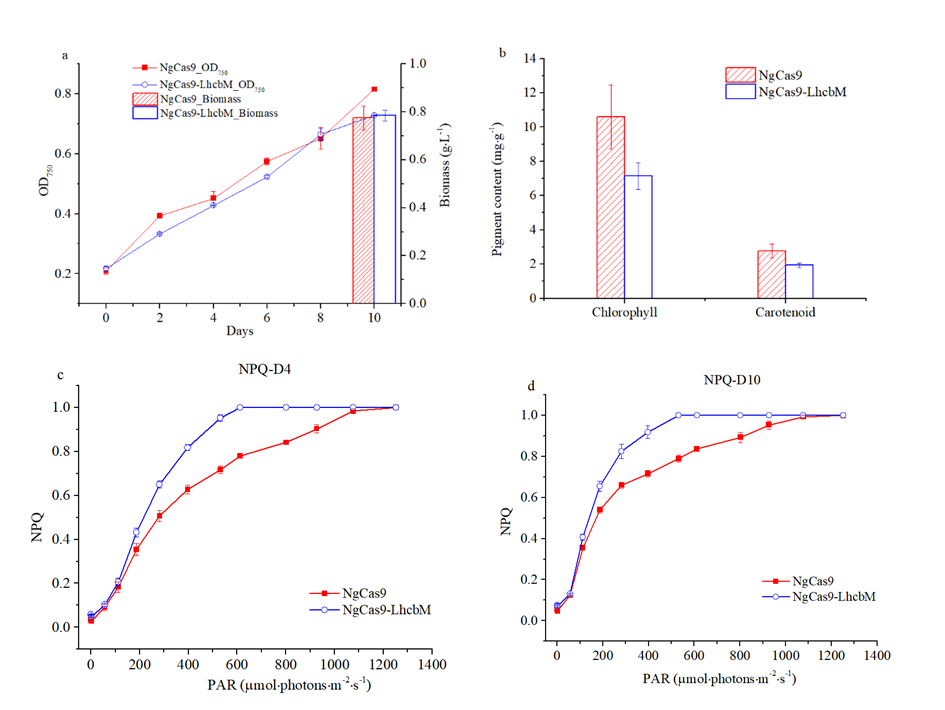Microalgae is the first-class producer on the planet. It is widely distributed, grows rapidly, has high carbohydrate and fat productivity, and is considered to be an important component of biomass energy. It is also widely used in feed, nutrition, health care and pharmaceutical industries. . The production of microalgal biomass is a prerequisite for the development of the microalgae industry. As a photoautotrophic organism, the efficiency of light energy utilization determines the growth of eukaryotic microalgae and the accumulation of biomass. Therefore, improving the utilization efficiency of microalgae light energy has always been a hot spot in the field of microalgae research. Under the leadership of Li Weili, the molecular microbial engineering team of Qingdao Energy Institute has also been focusing on improving the photosynthetic efficiency by modifying the microalgae photosynthetic system.
Through heavy ion mutagenesis, the team successfully constructed a mutant library of the green algae Desmodesmus sp. SP1, and selected a mutant strain with a significant increase in oil yield, and it was characterized by high gloss resistance. Transcriptome analysis indicated that the expression of the gene LHCB controlling the expression of the light-harvesting pigment antenna protein in the mutant was significantly down-regulated compared to the wild-type, and immunoblotting experiments further demonstrated a significant decrease in the amount of light-harvesting protein in the mutant. The decrease in the number of light-harvesting protein antennas prevents the mutant from ingesting too much light energy, thereby protecting its photosynthetic system from excessive light energy. In order to verify the possibility of rationally regulating the size of the microalgae light-harvesting antenna, the molecular microbial engineering team further studied the model microalgae Nannochloropsis gadiatana, and firstly used the CRISPR/Cas9 technology to carry out a key light-harvesting protein gene LHCBM in the photosynthetic metabolic pathway. Accurate knockout (Fig. 1) resulted in a significant decrease in the pigment content of the light-harvesting antenna of the resulting transformants and a significant improvement in the protection of the photosynthetic system (Fig. 2). The experiment proved the feasibility of improving the utilization rate of photosynthetic autotrophic light energy by directly modifying the light-harvesting protein gene. Related research papers have been accepted by the Journal of Applied Phycology and will be published online soon.
The above research has been supported by the National Key R&D Program, the Natural Science Foundation and the Shandong Provincial Key R&D Program.

Figure 1. Accurate knockout of N. gadiatana's light-harvesting protein gene LHCBM (NgCas9-LHCBM) using CRISPR/Cas9 technology.

Figure 2. The growth rate of the transformant (NgCas9-LHCBM) did not decrease (a), the pigment content of the light-harvesting antenna decreased significantly (b), and the protective ability to the photosynthetic system was significantly improved (c, d).